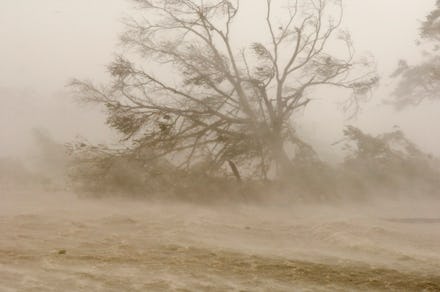A new study shows how climate change is making hurricanes bigger and stronger than ever

This year’s hurricane season is set to break the record for the most named storms since 2005. One big reason for the surge is rapid intensification — a phenomenon where storms intensify to dangerous levels within a short amount of time. Intensification can occur at greater rates thanks to climate change. But while we know climate change can make storms form faster and grow stronger, we don’t know as much about how long they last once they hit land. This “decay” rate was the subject of a study published last week in Nature, which found that hurricanes are lasting longer and pushing further inland than storms of the past.
Hurricanes are typically a coastal thing. They need warm ocean moisture to maintain their strength and energy, so once they hit land, they usually die out. Unfortunately, climate change has bucked that trend over the past half-century. Modern day hurricanes are storing more heat and moisture, giving them the boost needed to move inland. The researchers looked at data on hurricanes that hit the U.S. from 1967 to 2018, running simulations and tests to see how warmer ocean waters affected the storms. They found that a warmer ocean provided more moisture for the storm, which gave it more energy to go over land. This can turn into a big problem as the oceans continue to rise in temperature all around the world.
Back in the late 60s, for example, a hurricane would lose about 75 percent of its power when it hit shores. Now, the typical hurricane loses only about 50 percent.
This is bad news for coastal communities and the neighborhoods nearby. The flooding situation from these storms is getting so bad that the government is straight-up moving neighborhoods further away from the coasts, basically giving up on rebuilding or mitigating the damage from future storms.
“If [the study’s] conclusions are sound, which they seem to be, then at least in the Atlantic (region), one could argue that insurance rates need to start going up and building codes need to be improved further inland to compensate for this additional wind and water destructive power,” meteorologist Brian McNoldy told National Geographic.
Still, scientists need more research before they can say with certainty what’s going on.
“I would probably lean toward it definitely possibly happening. I think the combination of the data and the simple modeling experiments are very compelling,” atmospheric scientist and study reviewer Dan Chavas told National Geographic. “I think the effect is very real, but the question is how strong of an effect is this.”
There are other questions that also need answers: What amount of moisture gives hurricanes a longer life on land? How does the change in temperature change a hurricane? And what about hurricanes in other parts of the world?
It’s worth looking into the details instead of just accepting the findings as-is, other researchers suggested. Understanding exactly how these storms behave on land is likely to become an increasingly important part of keeping communities who never thought they’d have to worry about hurricanes safe from this new threat.